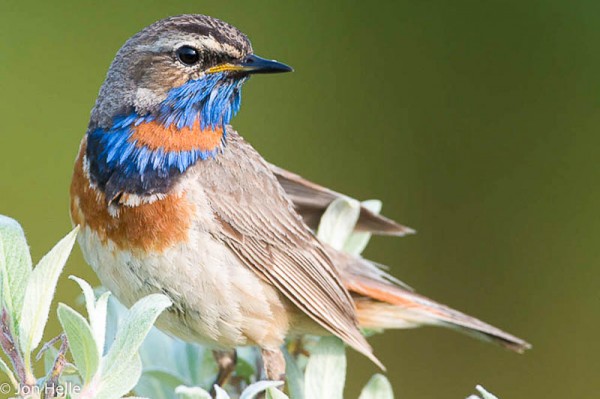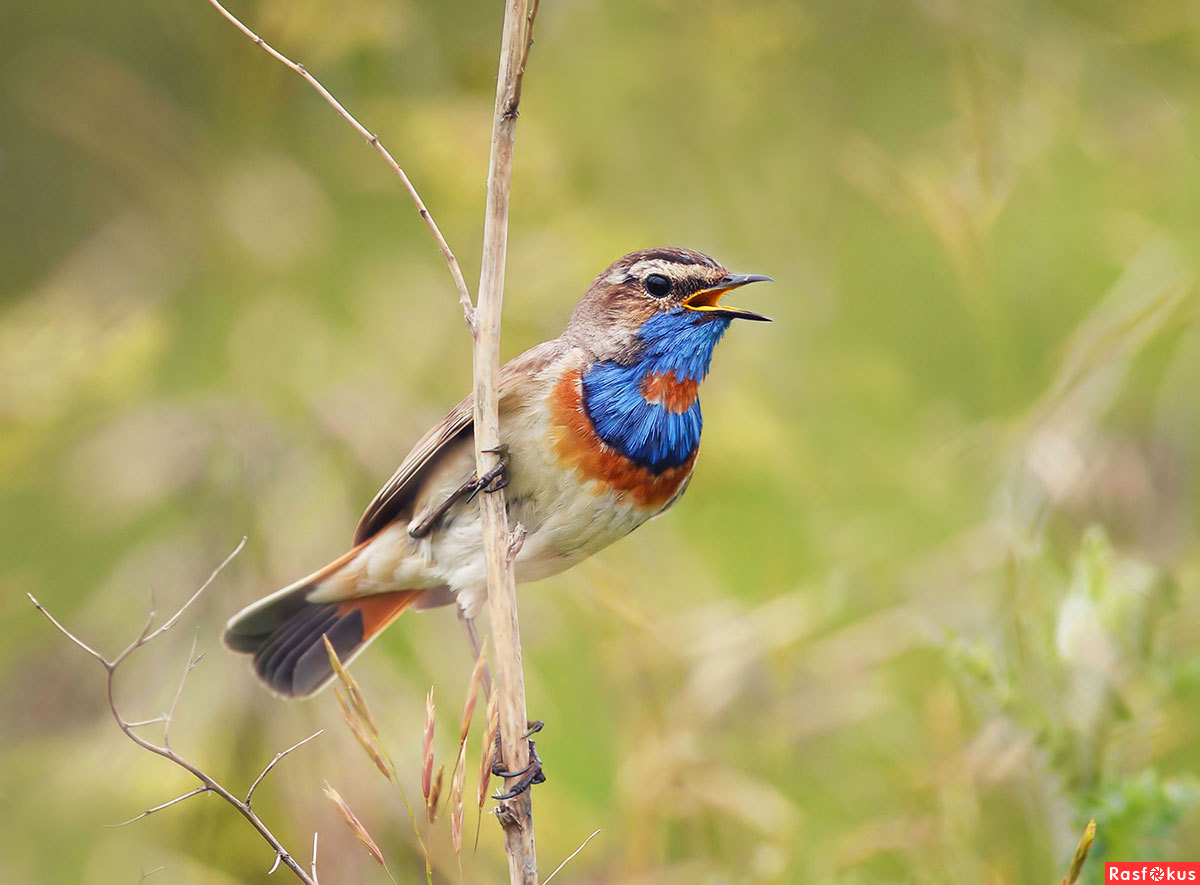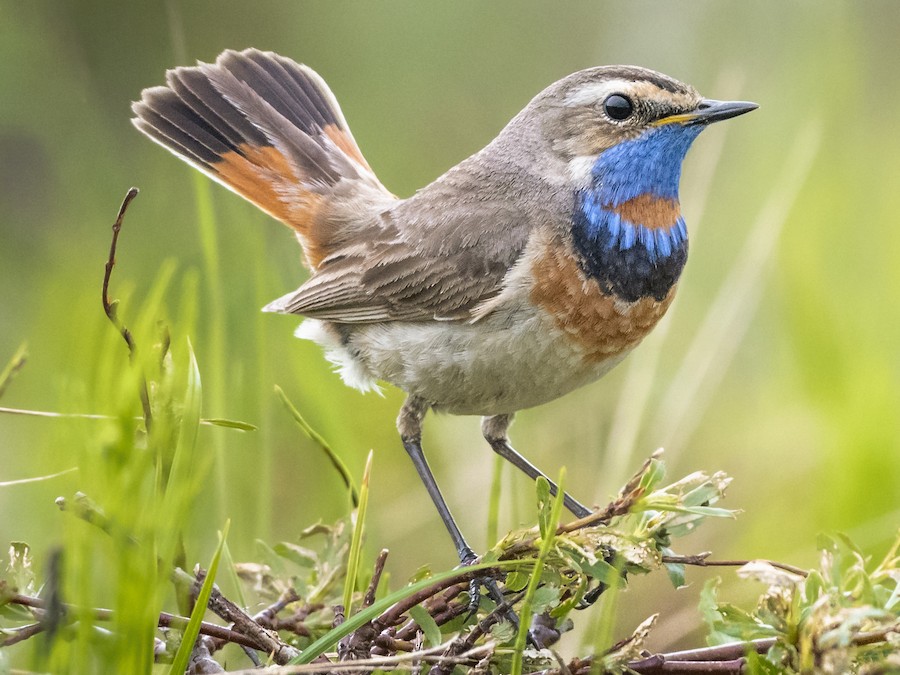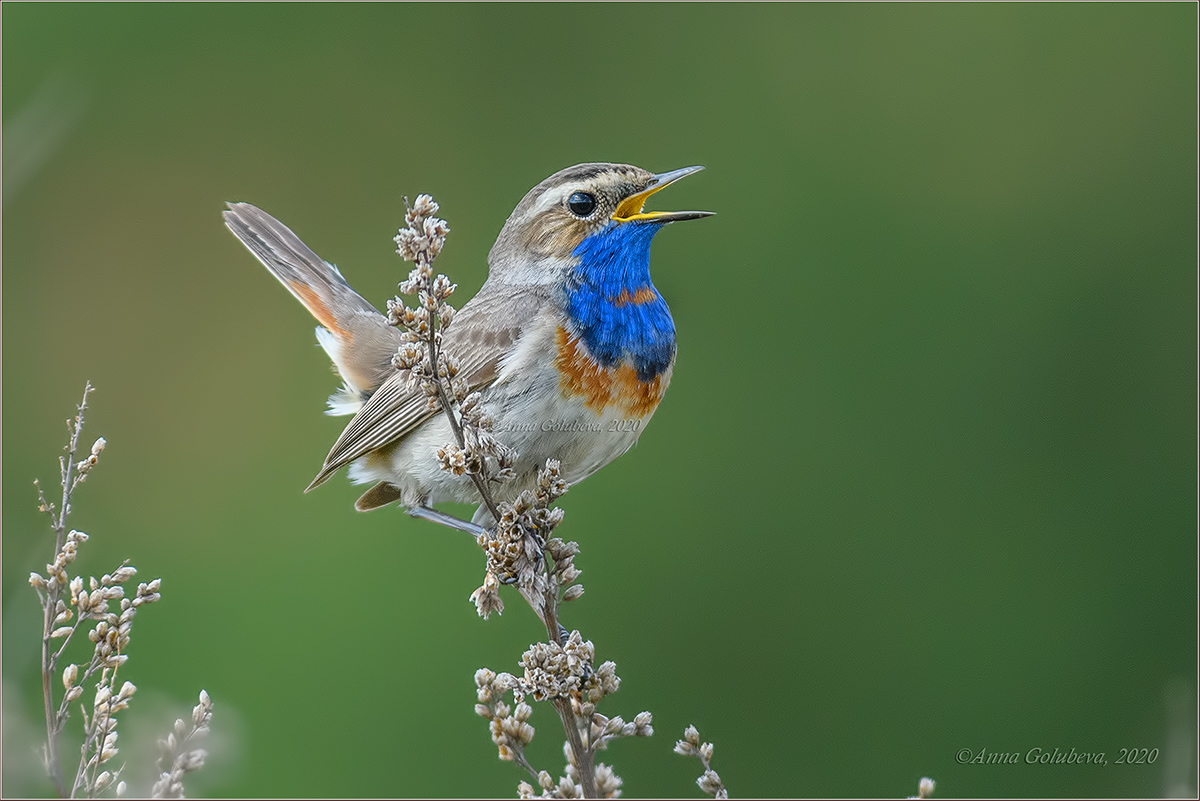The charming blue-throat, scientifically known as Luscinia svecica, is a small bird that is famous for its captivating beauty and melodious songs. These enchanting creatures thrive mainly in the lush wetlands and marshy regions of Europe and Asia, casting a spell on birdwatchers and nature enthusiasts alike.
One cannot help but be entranced by the blue-throat’s exquisite appearance. Its defining feature is the vibrant blue bib-like throat, adorned with a striking white or pale yellow border. This unique coloring makes it a true spectacle against its backdrop of typically brown upper parts, beautifully streaked to blend seamlessly with its natural habitat. During the breeding season, the males flaunt their resplendent blue throats as a means of seduction, hoping to attract potential mates and stake their claim on territories.

However, the blue throat bird’s appeal is not limited to its attractive appearance; it also possesses extraordinary vocal abilities. Emitting a harmonious medley of whistles, clicks, and trills, its melodies reverberate throughout the wetlands, serving as a vital form of communication. These songs play a crucial role in the blue throat bird’s world, from serenading potential partners to warning off competitors.

These birds are known for their impressive migratory abilities, in addition to their other remarkable qualities. They spend the breeding season in Europe and Asia, and then embark on an impressive journey to their wintering grounds in North Africa and the Indian subcontinent. Despite being small in size, they cover astounding distances during their migrations, which is a testament to their endurance and adaptability.

Researchers are devoted to studying the behaviors and migratory patterns of bluethroats in order to deepen our understanding of their life cycle and ecological significance. These stunningly beautiful birds, with captivating songs, serve as a symbol of the delicate beauty and biodiversity inherent in wetland habitats worldwide.






